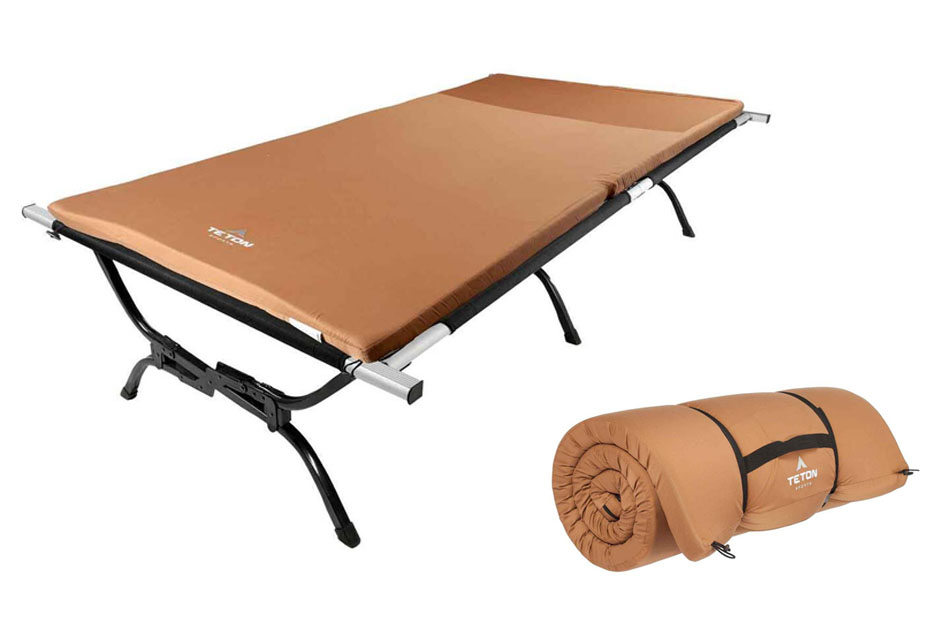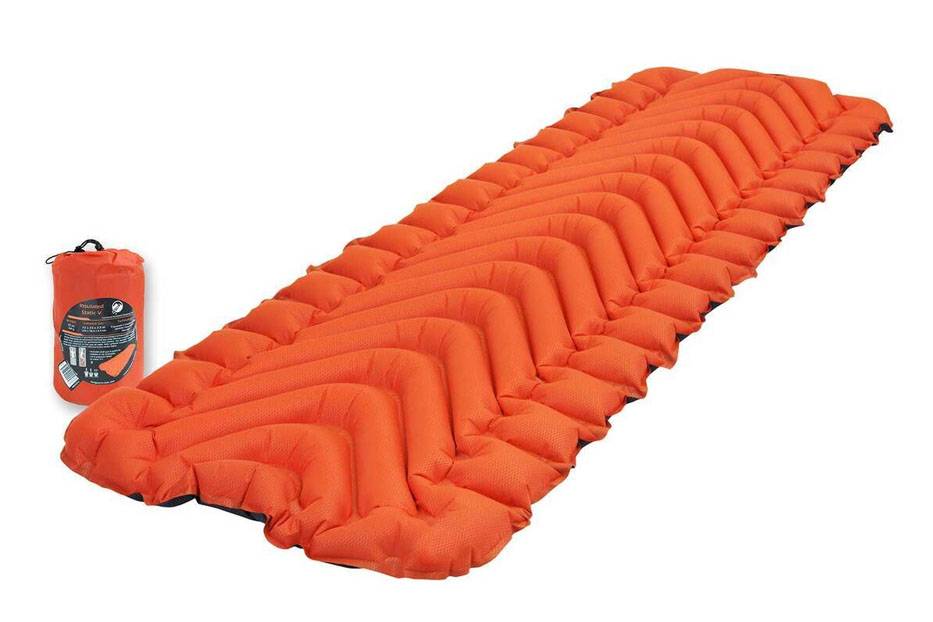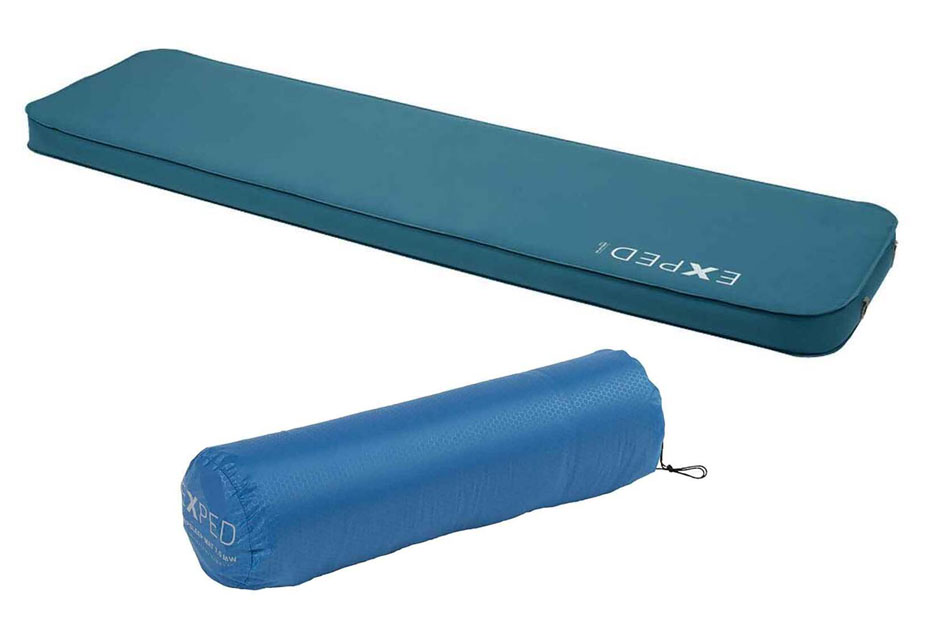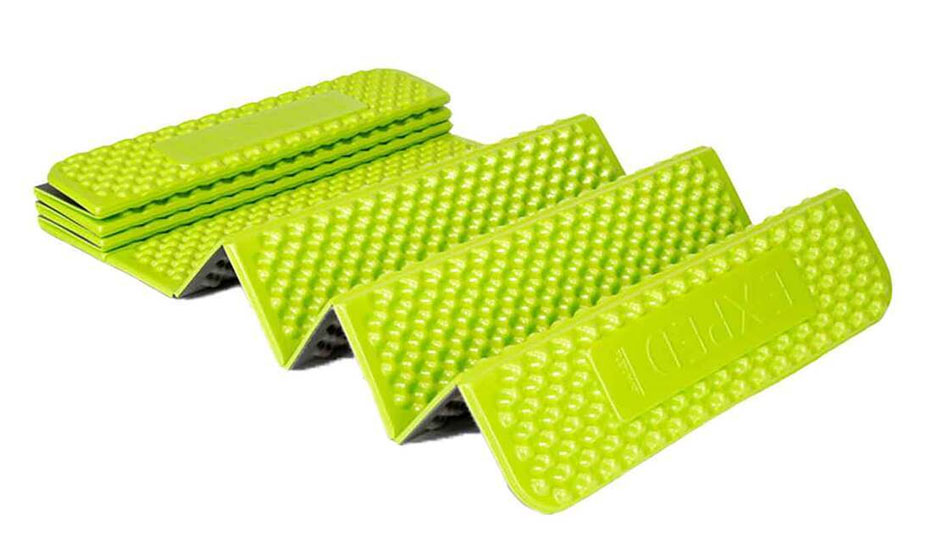How to Choose a Sleeping Pad for Camping
By Kate Small |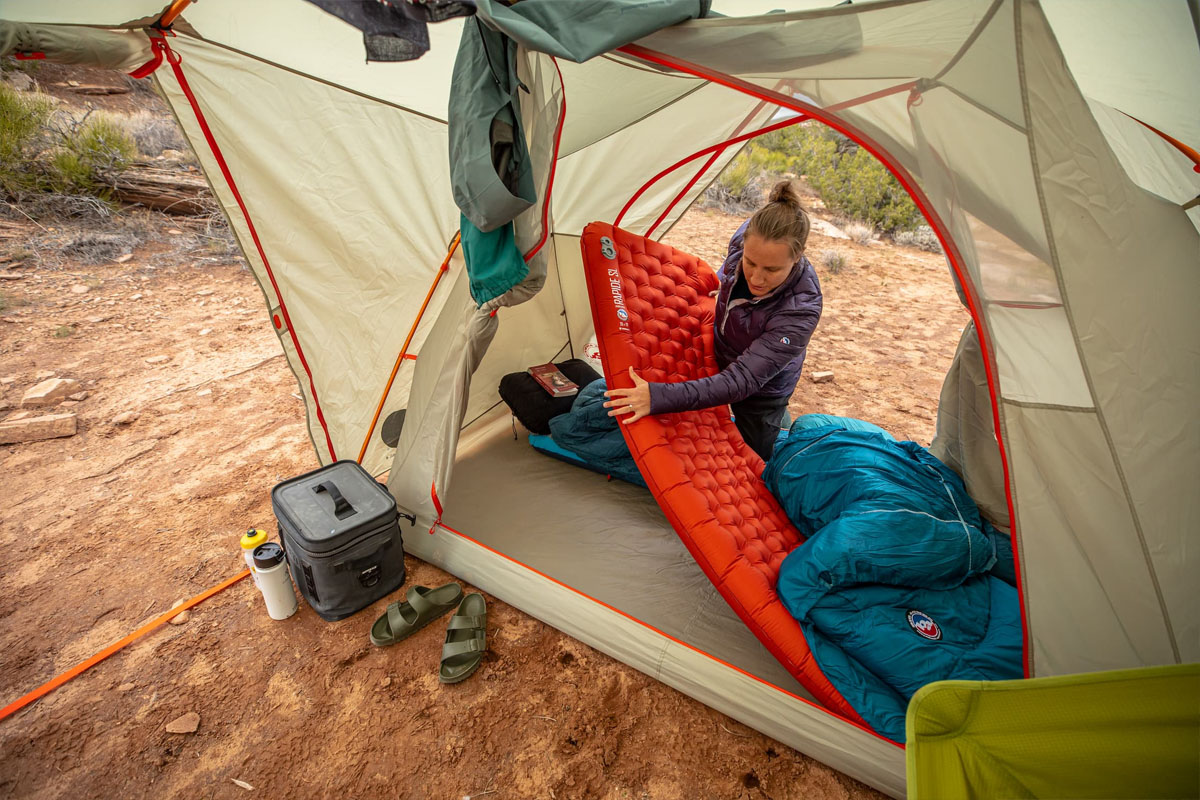
“It's knowin' that your door is always open, and your path is free to walk. That makes me tend to leave my sleepin' bag rolled up and stashed behind your couch,” opens Glen Campbell’s “Gentle on My Mind.”
In the wilderness, stashing that sleeping bag isn’t an option on the cold hard ground. Whether it’s a grassy meadow or a rocky outcropping in the mountains, a sleeping bag is a welcome friend after a hard day on the trail. But because the ground can be just as hard as the trail, many modern wilderness campers prefer the comfort of a sleeping pad to add a layer of padding between you and the unyielding ground below.
What is a Sleeping Pad?
A sleeping pad described simply is a portable mattress that is laid directly on the ground, with your sleeping bag placed on top. The primary purpose of a sleeping pad is to create a soft place for you to lie at night. A secondary use is to provide an extra insulating layer between you and the cold ground. Heat, and conversely, cold transfers best by direct contact, so a sleeping pad in addition to your sleeping bag creates two layers of separation. This is especially important in the cold of winter outdoor camping, or the high altitude cold you experience in the mountains even in July and August.
What Types of Sleeping Pads are Available?
Originally, sleeping pads were a doubled-over blanket stretched on the ground underneath you, but they’ve evolved into a wide variety of styles, designs, and options. We’ll take a look at the most popular types available today and list the pros and cons of each.
Types of Sleeping Pads:
- Open cell foam
- Air
- Self-inflating air
- Closed cell foam
We’ll walk through these four types of sleeping pads to make sure you have the basics, and then share the most important factors at play in selecting which type is best for your needs.
| Type of Pad | Comfort Level (5 most - 1 least) |
Type of Camping | Ease of Packing for Storage |
Ease of Setup | Cold Weather Protection up to |
|---|---|---|---|---|---|
| Open cell foam | 4 | Backpacking | Easy | Easy | 30° F |
| Air | 3 | Backpacking | Moderate | Moderate | 10° F |
| Self-inflating air | 5 | Camping | Difficult | Easy | -40° F |
| Closed cell foam | 1 | Backpacking, Camping |
Easy | Easy | 50° F |
Open Cell Foam Sleeping Pads
If you went camping as a kid in the 70s or 80s, odds are you either slept with your sleeping bag rolled out on the open ground, or maybe with an open cell foam pad. Open cell foam is the original sleeping pad. They’re made of the same foam material you find in chairs, couches, and cheap mattresses.
They have a few benefits, the first being that they are lightweight, and the second is that they’re easy to roll and tie onto a backpack. When wilderness camping, with everything you’ll need carried on your back, the weight issue becomes a big one.
These pads come in a variety of lengths and widths since they’re just rolls of open foam cut to specific parameters.
Now for the challenges of using an open cell foam pad.
The first is that they absorb water like a sponge. Set one on damp ground at night, and when you wake in the morning it will be waterlogged and heavy. This ability to absorb water leads to mold and mildew if the pad isn’t properly aired out while in storage. The third detraction for open foam is how it compresses under your weight while you sleep. It starts as soft and comfortable but by morning it has compressed to less than an inch in depth and you’ll feel every rock.
| Pros | Cons |
|---|---|
|
|
Air Sleeping Pads
Air sleeping pads have been around for a long time, over a century. They’ve evolved from just a row of pneumatic tires sealed together into the functional, puncture-resistant style many backpackers prefer today.
The biggest draw to an air mattress is the weight. There is no supporting medium inside, just the outer ring that is filled with air. It’s easy to compress and pack and won’t compress under your weight as you sleep.
The drawback is that it needs to be inflated and then deflated each day. Packing an air pump is another detriment, though you can blow them up with your lungs if you have the time, patience, and strength.
With air pads in the backcountry, it’s a great idea to take a patch kit with you in the event of a puncture.
| Pros | Cons |
|---|---|
|
|
Self-inflating Air Sleeping Pads
Regarded as a major improvement on the standard air pad, the self-inflating pad works on an entirely different principle than simply blowing air into a nylon or rubber bladder.
The material inside a self-inflating air pad is made of open cell foam insulation. When the air pad is stored, the cell foam insulation is compacted, and the air valve is shut. By opening the air valve, the cell foam expands, creating negative pressure which draws in the air and expands the pad.
Akin to a waterbed with baffles, this is one of the most popular air pads since it provides the comfort of foam, with the non-compressible nature of an air pad into one product. Best of all, you won’t get an aneurysm trying to blow this air pad up manually.
| Pros | Cons |
|---|---|
|
|
Closed Cell Foam Sleeping Pads
This is an innovative product, that arrives with many substantial pluses, and just as many substantial minuses.
The pad is light, the lightest of all the sleeping pad styles. It is easy to roll into a cylinder and can be purchased in styles that fold neatly into a small rectangular shape. They’re waterproof as well, a big plus for campers in wetter climates.
Now the drawbacks. The biggest is comfort. They just aren’t that comfortable. They’re thin, and while constructed of foam, they’re not nearly as easy to sleep on as a traditional open cell foam pad. They’re heavier than open cell foam too.
| Pros | Cons |
|---|---|
|
|
Things to Consider in a Sleeping Pad
Now that you know the types of sleeping pads, how do you figure out which one is right for you? Here are the major factors to consider.
R-Value (Thermal Resistance)
You’ve probably heard the term “R-Value” before, but most likely in the context of home construction, wall thickness, and insulation. The definition of it is “thermal resistance.” The higher the R-value the thicker the cellulose, fiberglass, or rigid foam is in your walls.
You wouldn’t want to sleep on any of these materials, but a similar scale exists for sleeping pads.
The R-value in a sleeping pad is an eight-step scale, with the lowest numbers providing the least thermal resistance and the highest, the most resistance. A little-known fact is that combining two sleeping pads increases the R-value slightly more than just doubling it due to the extra layer of insulating air between the two pads.
The thicker the pad, the higher the R-value in a specific material.
R-Value Temperature Range by Rating
| R-Value | 1 | 2 | 3 | 4 | 5 | 6 | 7 | 8 |
|---|---|---|---|---|---|---|---|---|
| Air Temperature (F) Tolerance | 50° F | 30° F | 25° F | 10° F | 0° F | -15° F | -25° F | -40° F |
Let’s take a look at the R-value of each of the four most popular styles of sleeping pads compared with each other.
Sleeping Pads R-Value
| Type of Pad | R-Value | Thickness | Cold Protection |
|---|---|---|---|
| Open cell foam | 1-2 | 1-3 | 30-50° F |
| Air | 1-4 | 2-4 | 10-50° F |
| Self-inflating air | 6-8 | 2-4 | -15 to -14° F |
| Closed cell foam | 1 | .5 - 1.5 | 50° F |
Type of Camping
For our comparison, we’re going to gauge the two major styles of camping; backpacking and campsite based.
Backpacking requires you to carry everything you’ll need for a time in the wilderness on your back, including your sleeping pad. Weight is an issue with backpacking and can be a limiting factor in determining which style of pad to use. If you’re carrying a tent as well, the weight issue can magnify.
Campsite sleeping pads are only limited to the storage space in your SUV, truck or pull behind camper. They can be as heavy as you can handle, used on a bed inside a camper, or in a cot inside a tent, or just outside on the ground as you would when backpacking. Anything is fair game if four wheels and an engine are bringing it to the campsite.
Thickness
That 14-inch deep Beautyrest mattress you may sleep on at home is very comfortable but imagine packing that monster into your favorite backwoods lake. Not a pretty image is it?
Thickness in a sleeping pad has a close correlation with comfort, just as the mattress on a king-sized bed does. In general, the thicker the pad, the more comfortable it is.
With thickness comes weight, and more of a challenge in packing the pad tight enough to tie to your frame pack.
An open cell foam pad four inches thick is the maximum you could roll and tie to your pack, but it is comfortable. A closed cell pad is thin by design, only a half to one-and-a-half inches thick in most models. It doesn’t offer much comfort.
Traditional air pads come in many sizes, though four inches is the norm. They offer great comfort but can be unstable since the slightest movement can have you sliding off the pad and onto the ground.
The best air pad in terms of comfort for campsite use is the self-inflating air style. It’s a rectangle that offers good support on all surface points. The compressible inflating material inside provides comfort similar to an open cell pad, and yet it doesn’t compress flat overnight as a foam pad often does.
Real Life Sleeping Pad Comparisons
One long weekend I hiked the trail from Fiddlers Lake to Island Lake on South Pass in the Wind River Mountains. It was July, so I carried a lightweight cloth sleeping bag, and a thin closed cell foam pad. It was comfortable enough the first two nights, but the third night the temperature dropped to 25 degrees with light snow. Sound asleep, I didn’t realize I was inching towards the campfire until I awoke to a smoldering sleeping bag with the scorched exterior in the fire. I’d slipped off the pad and an ember ignited the outside of my bag.
On another occasion I was deer hunting on Grass Creek near Meeteetse, Wyoming. We had a 16-foot camper but ran out of propane one night. The temperature dropped to -15 that night. I was sleeping on the dual-purpose dining room table/front bed in the camper with foam seat cushions as a base and a self-inflating three-inch air pad under my bag. The bag was rated to -20 and I had a comfortable night’s sleep.
It's all in the weather situation, the amount of cover you have and in selecting the correct sleeping pad for those conditions.
